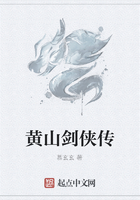A statue was made by Guglielmo della Porta of Julia Farnese, Alexander's beautiful second mistress.It was placed on the tomb of her brother Alessandro (Pope Paul III).A Pope at a later date provided the lady, portrayed in `a state of nature,' with a silver robe--because, say the gossips, the statue was indecent.Not at all: it was to prevent recurrence of an incident in which the sculptured Julia took a static part with a German student afflicted with sex-mania.
I become, however, a trifle excursive, I think.If I do the blame lies on those partisan writers to whom I have alluded.They have a way of leading their incautious latter-day brethren up the garden.They hint at flesh-eating lilies by the pond at the path's end, and you find nothing more prone to sarcophagy than harmless primulas.In other words, the beetle- browed Lucretia, with the handy poison-ring, whom they promise you turns out to be a blue-eyed, fair-haired, rather yielding little darling, ultimately an excellent wife and mother, given to piety and good works, used in her earlier years as a political instrument by father and brother, and these two no worse than masterful and ambitious men employing thepolitical technique common to their day and age.
Messalina, Locusta, Lucretia, Theodora, they step aside in this particular review of peccant women.Cleopatra, supposed to have poisoned slaves in the spirit of scientific research, or perhaps as punishment for having handed her the wrong lipstick, also is set aside.It were supererogatory to attempt dealing with the ladies mentioned in the Bible and the Apocrypha, such as Jael, who drove the nail into the head of Sisera, or Judith, who cut off the head of Holofernes.Their stories are plainly and excellently told in the Scriptural manner, and the adding of detail would be mere fictional exercise.Something, perhaps, might be done for them by way of deducing their characters and physical shortcomings through examination of their deeds and motives--but this may be left to psychiatrists.There is room here merely for a soupcon of psychology--just as much, in fact, as may afford the writer an easy turn from one plain narrative to another.You will have no more of it than amounts, say, to the pinch of fennel that should go into the sauce for mackerel.
Toffana, who in Italy supplied poison to wives aweary of their husbands and to ladies beginning to find their lovers inconvenient, and who thus at second hand murdered some six hundred persons, has her attractions for the criminological writer.The bother is that so many of them have found it out.The scanty material regarding her has been turned over so often that it has become somewhat tattered, and has worn rather thin for refashioning.The same may be said for Hieronyma Spara, a direct poisoner and Toffana's contemporary.
The fashion they set passed to the Marquise de Brinvilliers, and she, with La Vigoureux and La Voisin, has been written up so often that the task of finding something new to say of her and her associates looks far too formidable for a man as lethargic as myself.
In the abundance of material that criminal history provides about women choice becomes difficult.There is, for example, a plethora of women poisoners.Wherever a woman alone turns to murder it is ahundred to one that she will select poison as a medium.This at first sight may seem a curious fact, but there is for it a perfectly logical explanation, upon which I hope later to touch briefly.The concern of this book, however, is not purely with murder by women, though murder will bulk largely.Swindling will be dealt with, and casual allusion made to other crimes.
But take for the moment the women accused or convicted of poisoning.What an array they make! What monsters of iniquity many of them appear! Perhaps the record, apart from those set up by Toffana and the Brinvilliers contingent, is held by the Van der Linden woman of Leyden, who between 1869 and 1885 attempted to dispose of 102 persons, succeeded with no less than twenty-seven, and rendered at least forty-five seriously ill.Then comes Helene Jegado, of France, who, according to one account, with two more working years (eighteen instead of sixteen), contrived to envenom twenty-six people, and attempted the lives of twelve more.On this calculation she fails by one to reach the der Linden record, but, even reckoning the two extra years she had to work in, since she made only a third of the other's essays, her bowling average may be said to be incomparably better.
Our own Mary Ann Cotton, at work between 1852 and 1873, comes in third, with twenty-four deaths, at least known, as her bag.Mary Ann operated on a system of her own, and many of her victims were her own children.She is well worth the lengthier consideration which will be given her in later pages.
Anna Zwanziger, the earlier `monster' of Bavaria, arrested in 1809, was an amateur compared with those three.
Mrs Susannah Holroyd, of Ashton-under-Lyne, charged in September of 1816 at the Lancashire Assizes with the murder by poison of her husband, her own son, and the infant child of Anna Newton, a lodger of hers, was nurse to illegitimate children.She was generally suspected of having murdered several of her charges, but no evidence, as far as I can learn, was brought forward to give weight to the suspicion at her trial.Then there were Mesdames Flanagan and Higgins, found guilty, at Liverpool Assizes in February 1884, of poisoning Thomas Higgins,husband of the latter of the accused, by the administration of arsenic.The ladies were sisters, living together in Liverpool.With them in the house in Skirvington Street were Flanagan's son John, Thomas Higgins and his daughter Mary, Patrick Jennings and his daughter Margaret.















